Vitoria-Gasteiz. Cathedral of the Immaculate virgin Mary (Catedral de María Inmaculada de Vitoria)
In the capital of the Basque Country is the second largest Cathedral in Spain, second only to Seville. It can accommodate up to 16 thousand people, its length is 118 meters, width is 48 meters and height is 36 meters.
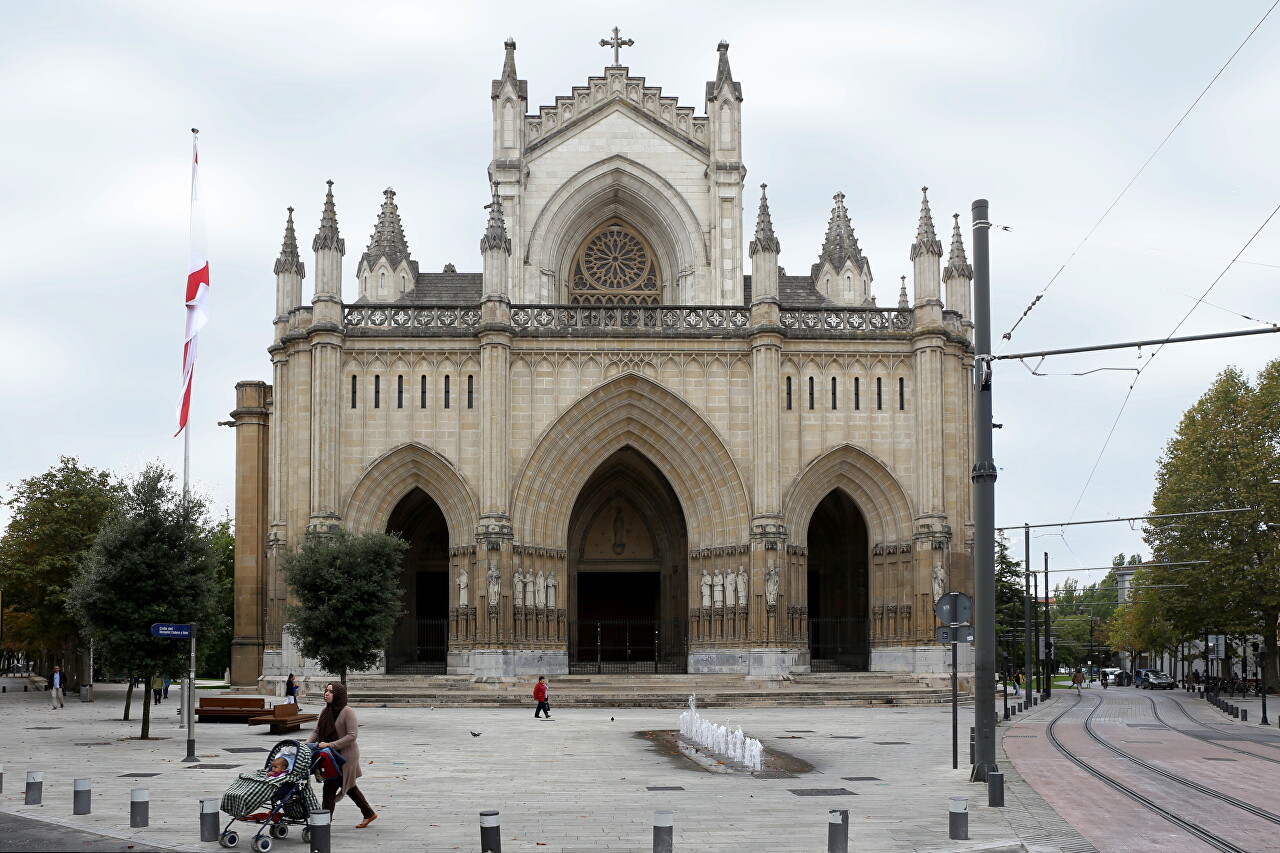
At first glance, you might think that the grandiose structure is more than one hundred years old, but this is the creation of architects and builders of our era.

By the beginning of the 20th century, the population of Vitoria Gasteiz had grown significantly and the cathedral, which dates back to the 12th century, became too small for the parish. Then Bishop José Cadena approached the city council with a proposal to build a large cathedral in the new part of the city. For construction, a site was set aside near Florida Park, occupied by buildings of the former monastery.
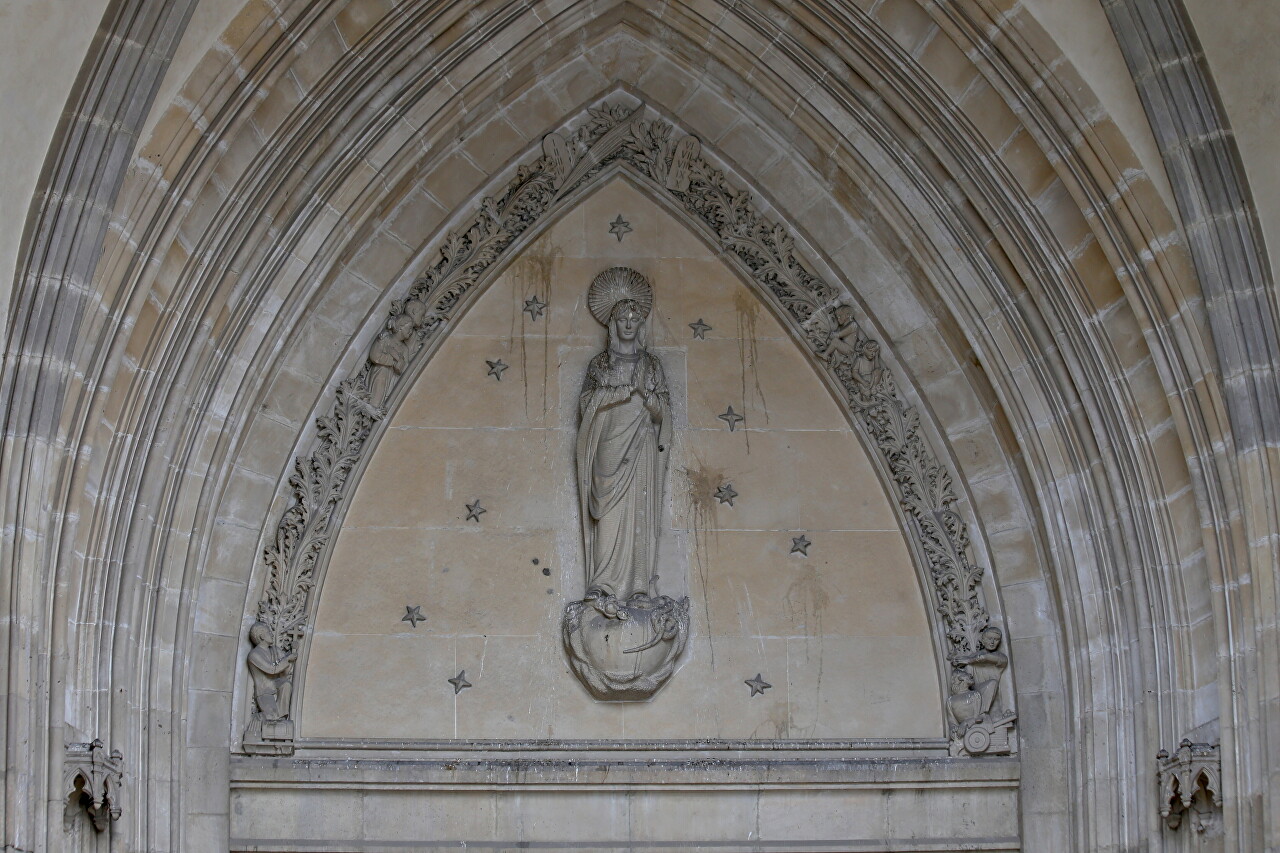
The project was commissioned by architects Julian de Apraisa and Javier de Luca, and the foundation stone was laid on August 4, 1907. The event was held with great fanfare, and the laying of the church was attended by the royal family - Alfonso XIII with his wife Victoria Eugenia and Queen Regent Maria Cristina, Vatican Archbishop Rinaldi, and civil authorities. The cathedral, like the old one, received the name of the Virgin Mary, and is referred to as "new".
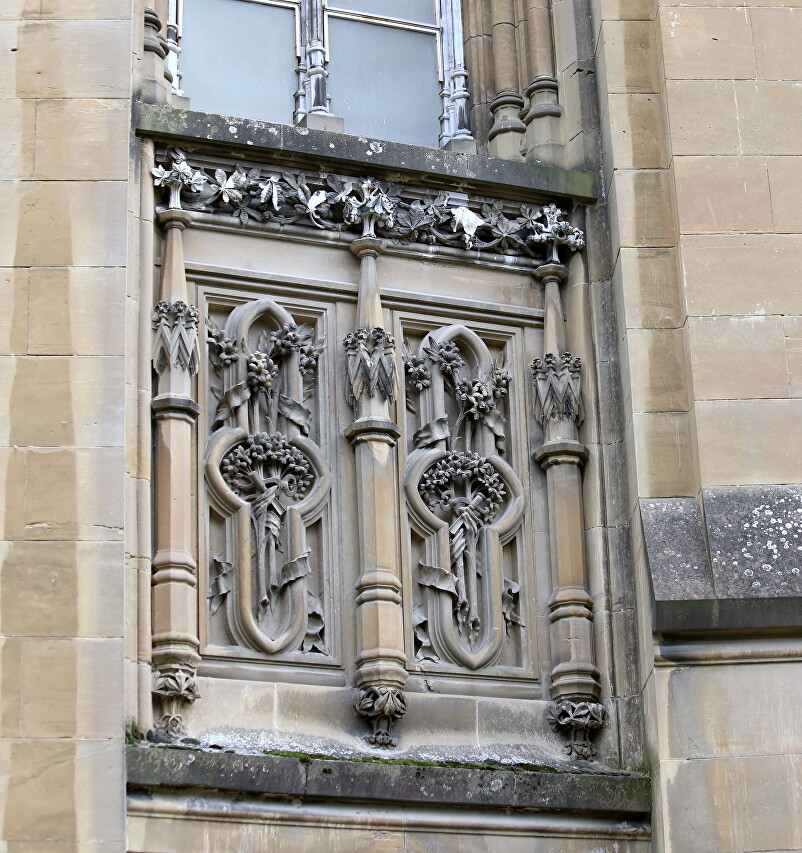
Construction also began on a grand scale, and artisans and artists from all over Spain, as well as foreigners, were invited to work. Construction and finishing materials-granite and marble were obtained from quarries in Baskonia and Navarre. By 1911, the crypt was completed, and after another 3 years, part of the internal pillars and walls of the facade. In 1914, with the arrival of the new bishop of Melo and Alcalde, construction was halted, as the original estimate of 5 million pessets was significantly blocked. After that, the construction stopped for almost 40 years, the unfinished walls were covered with ivy and the structure was called "ruinas"among local residents.
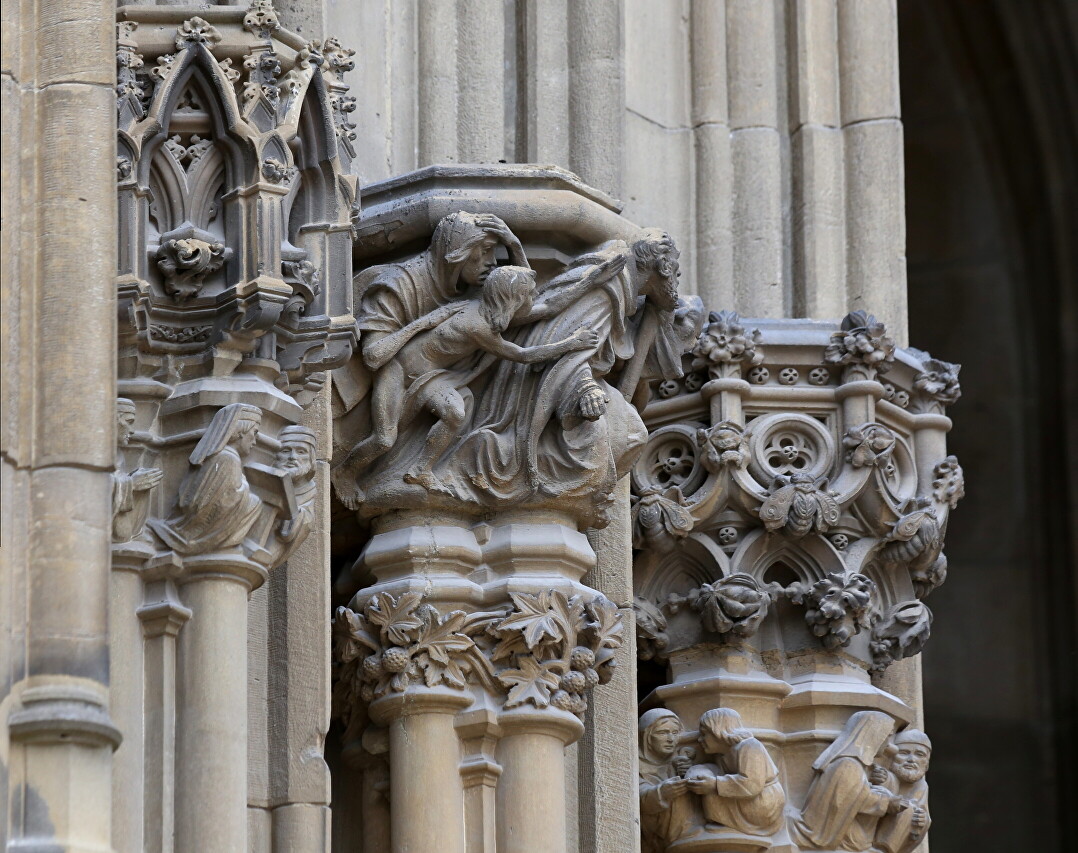
The second stage of construction began in 1946, when the country recovered from the Civil War and Bishop CArmello Nieto Ballester secured funding for long-term construction. The work continued under the direction of Aprais ' son Miguel, who was assisted by Antonio Camunhas Paredes.
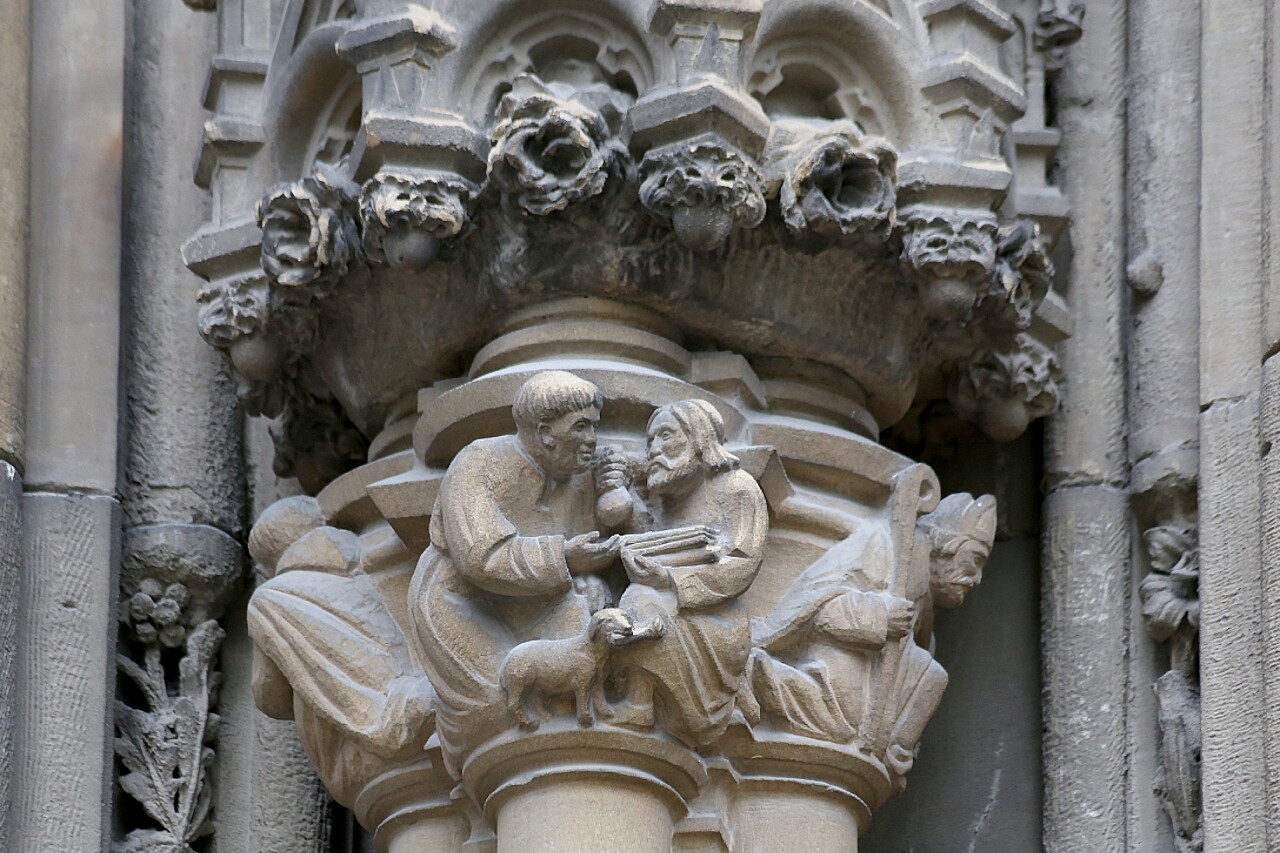
Construction continued according to the old plans, but in order to save money, concrete and artificial stone were widely used.
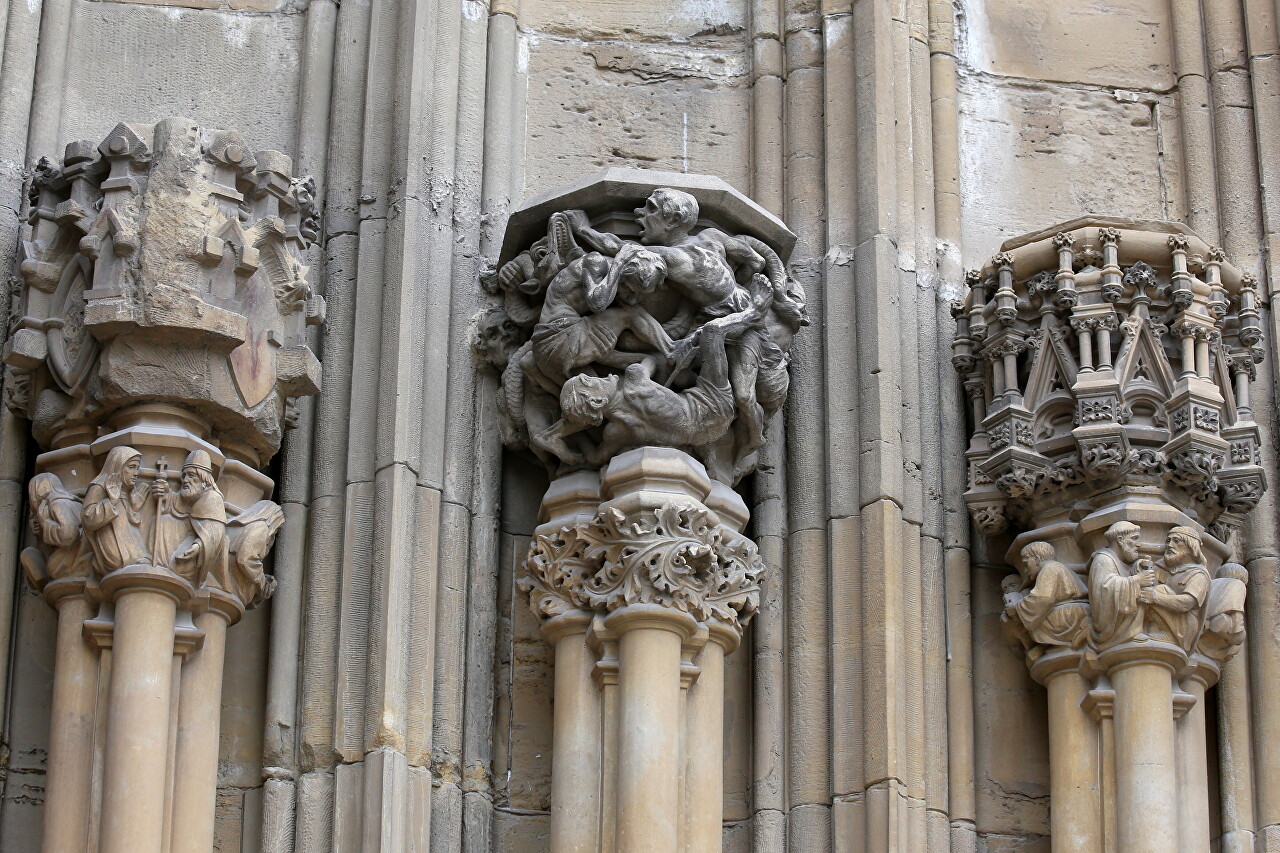
The cathedral was consecrated while still under construction, on September 24, 1969. The performance was performed by Cardinal Del Aqua in the presence of Genalisimus Franco and his wife. The construction was completed after another 4 years, some details of the design were not implemented.

The most notable is the sculptural decoration of the temple. Here you can see a lot of stories both biblical themes and scenes from secular life.
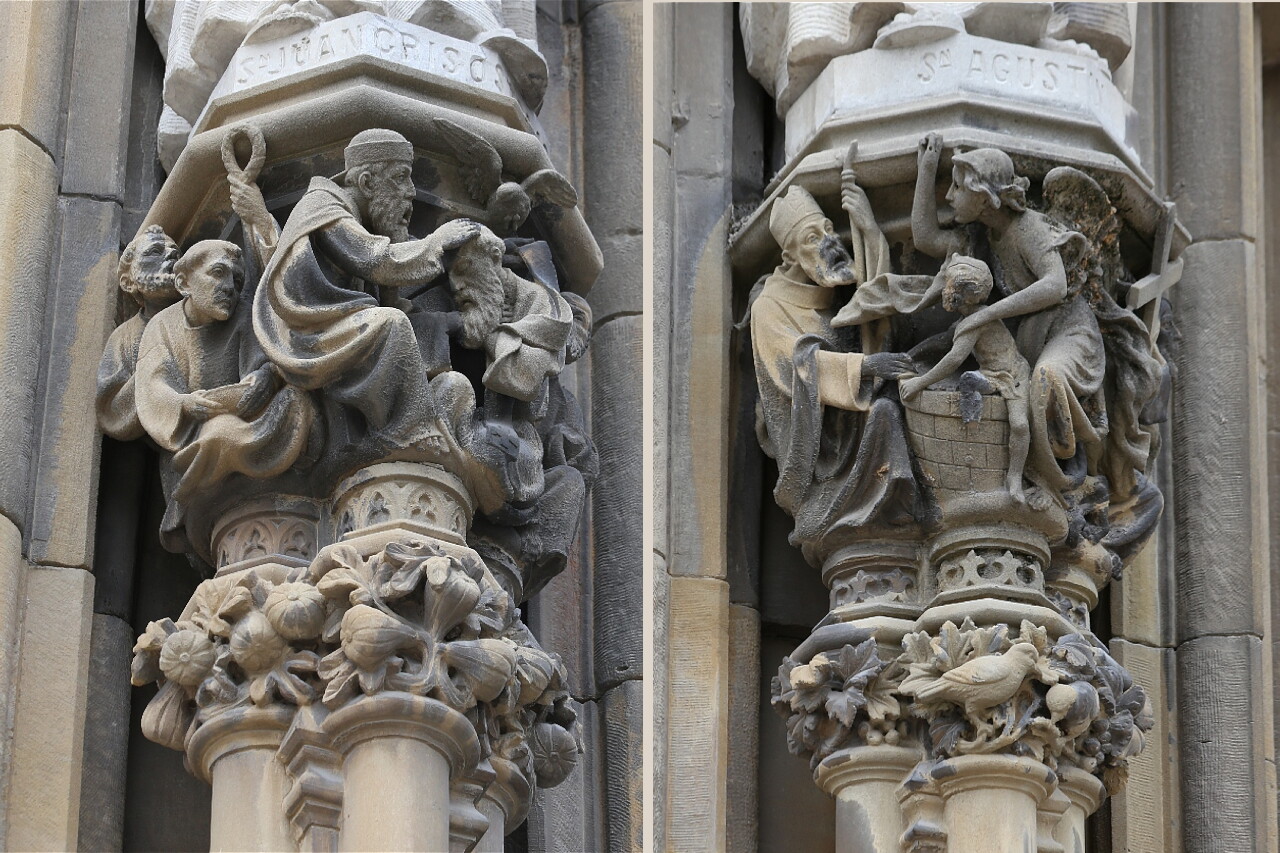
Gutters-gargoyles are made in the form of grotesque figures of people and animals very carefully and variously.
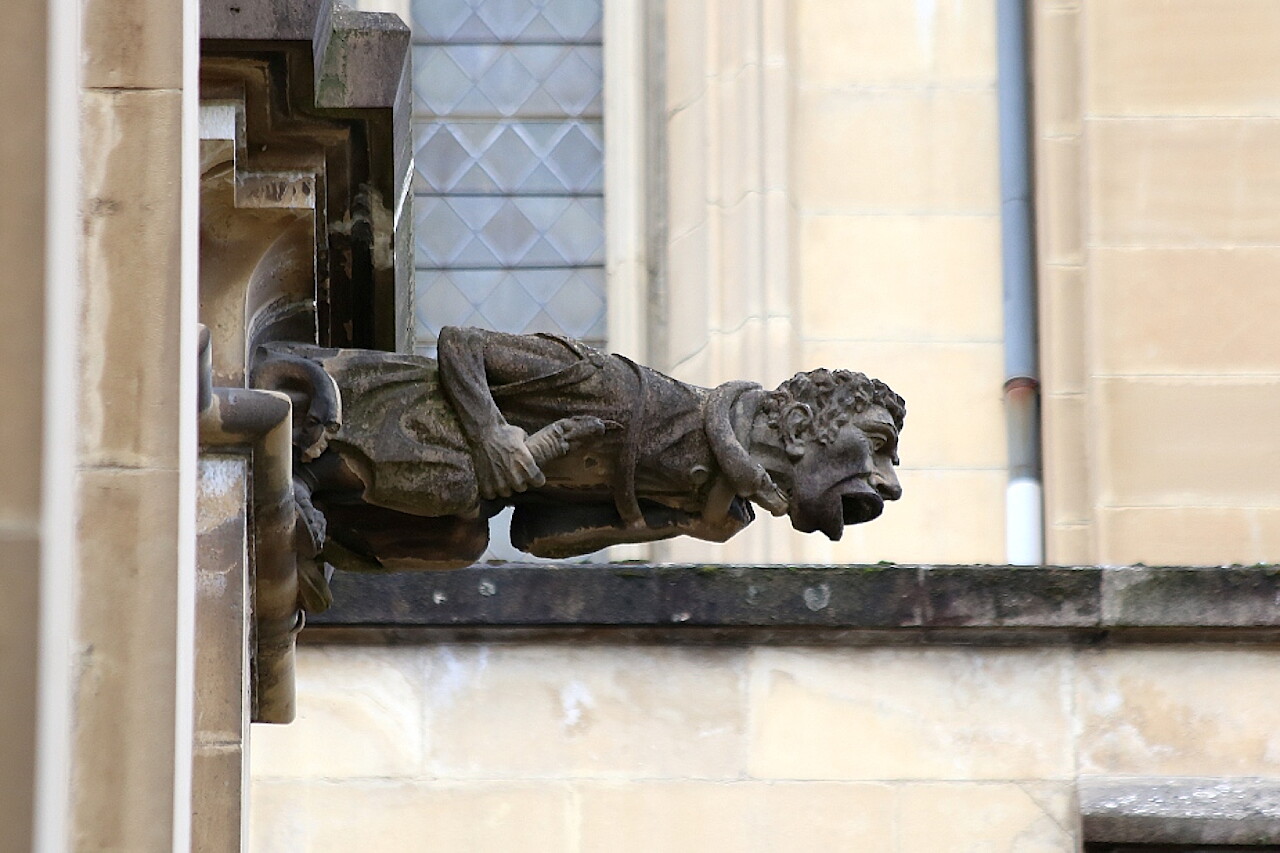
Some gargoyles have obvious signs of Art Nouveau style, such as vegetation elements. I mean, I've never seen anything like it anywhere else.

The side portals (southern in the photo) are made in the form of a Gothic arch with a round window. Above the entrance is a balcony with a large stained glass window. According to the original design, the portals should have been decorated with sculptures, but the niches and pedestals remained empty.
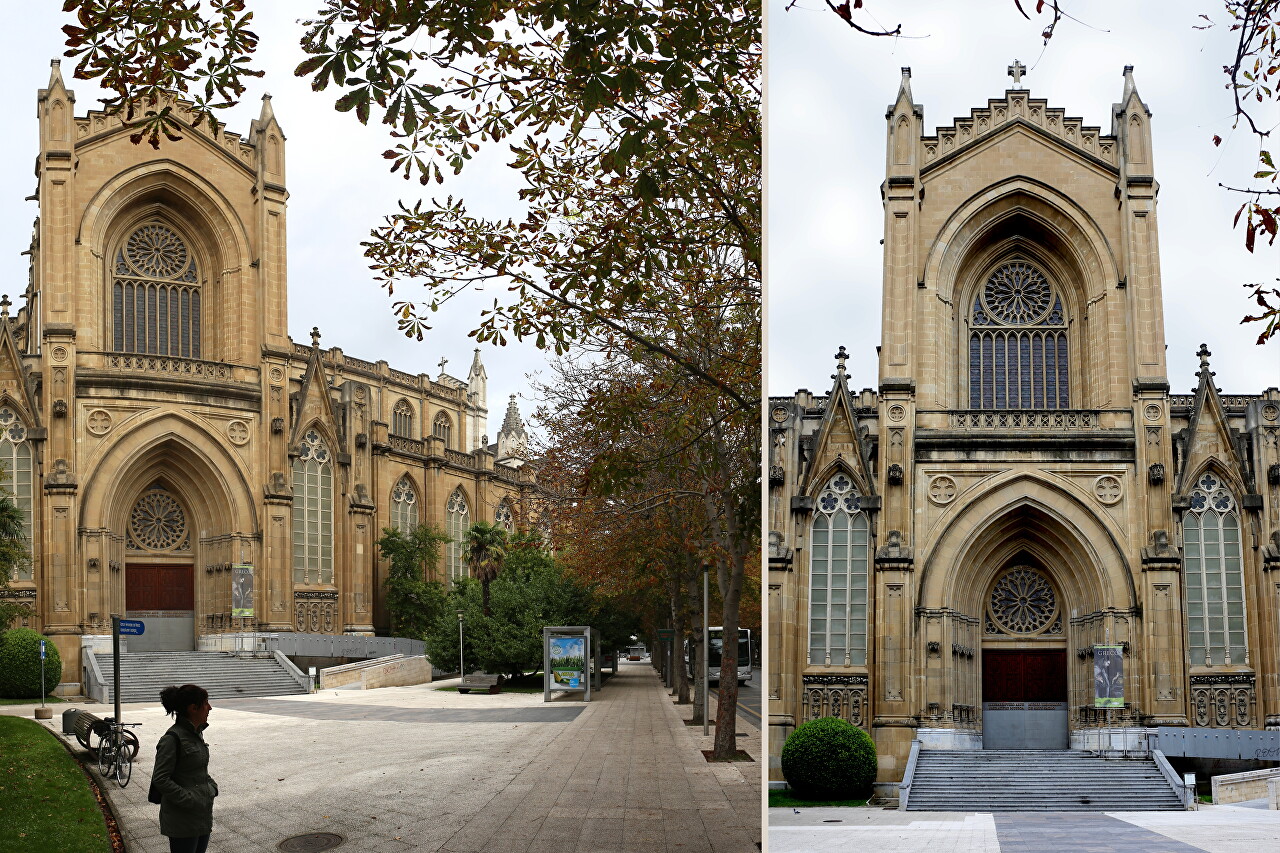
The western part of the cathedral opens onto the Jardines Ramón Fernández de Pierola Garden.
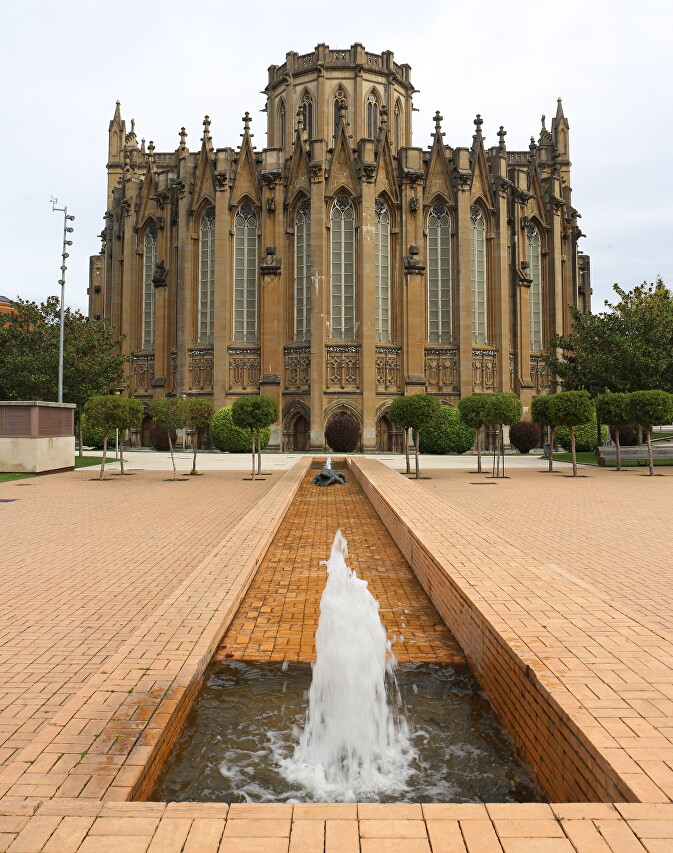
This part of the cathedral is occupied by the diocesan Museum, opened in 1999.
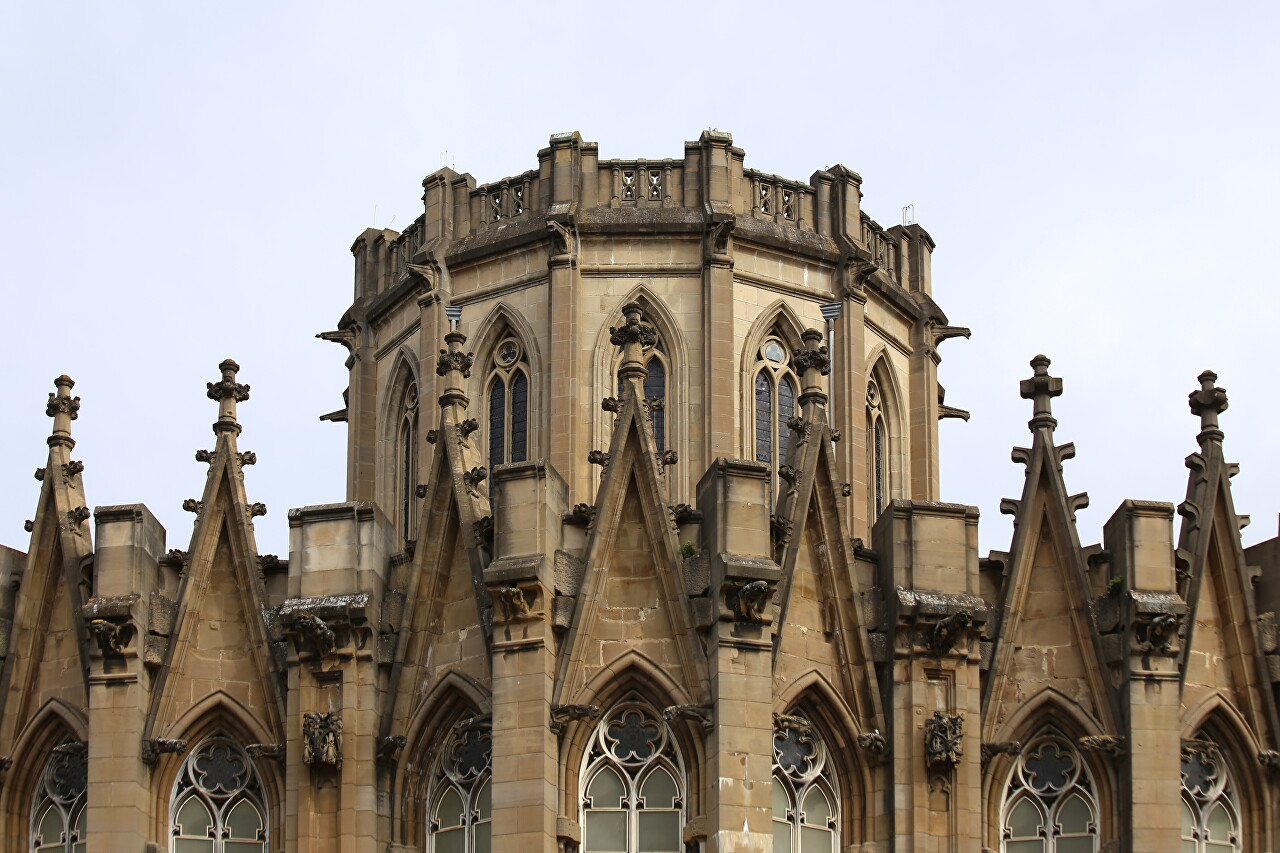
 The cathedral is located in the city center, a block west of the main square of Virgen Blanca. You can get to the cathedral from 10 to 18: 30, siesta from 14 to 16 hours. On Saturdays and Sundays, the cathedral is only open until 14. Services
start at 9: 00, 12: 30 and 19: 30 on weekdays, in 10:30, 11:30, 12:30 and 19: 30 on weekends.
The cathedral is located in the city center, a block west of the main square of Virgen Blanca. You can get to the cathedral from 10 to 18: 30, siesta from 14 to 16 hours. On Saturdays and Sundays, the cathedral is only open until 14. Services
start at 9: 00, 12: 30 and 19: 30 on weekdays, in 10:30, 11:30, 12:30 and 19: 30 on weekends.